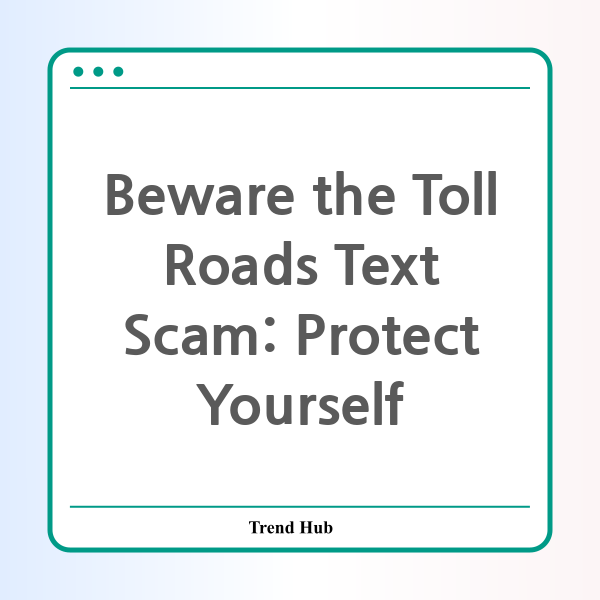* This website participates in the Amazon Affiliate Program and earns from qualifying purchases.

Have you recently received a text message demanding payment for unpaid tolls? You’re not alone. A concerning trend has emerged, with scammers targeting unsuspecting drivers through fake toll notices via SMS. The Texas Department of Transportation (TxDOT) and other officials nationwide are warning the public about these deceptive practices known as smishing (SMS phishing).
In this blog post, we will delve into the details of the toll roads text scam, how to recognize it, and what steps you can take to protect yourself from becoming a victim.
What is the Toll Roads Text Scam?
Scammers have been sending fraudulent texts that appear to be from legitimate toll agencies like TxTag, claiming that individuals owe money for unpaid tolls. These messages often come with a sense of urgency, threatening recipients with fines or the suspension of their vehicle registration if payment is not made promptly.
Typically, the scam text directs the recipient to click on a link to settle their alleged debt. However, this link often leads to a fraudulent site designed to capture personal and financial information.
Recognizing the Scam
Here are some key indicators that the text you received may be part of a scam:
- Urgent Language: The message pressures you to act quickly to avoid fines.
- Unknown Sender: The text comes from an unfamiliar number.
- Payment Links: The message includes a link that prompts you to enter sensitive information.
- Notable Format: Legitimate communications from TxTag and other toll agencies will come from verified numbers and not through random texts.
Official Communication Channels
TxDOT assures the public that it does not ask for payment via phone calls or unsolicited text messages. Legitimate notifications regarding unpaid balances will only come from the designated number “22498” or through the email associated with your TxTag account.
If you receive a suspicious message, do not engage with it. Instead, you can verify your TxTag account’s notification preferences by logging into your online account or contacting customer service directly.
How to Report the Scam
If you suspect that you’ve received a fraudulent text message, here’s what you should do:
- Contact TxTag customer service immediately at 1-888-468-9824.
- Report the scam to the FBI’s Internet Crime Complaint Center (IC3).
- Do not respond to the scam text. Instead, block the number and delete the message.
National Awareness
This issue is not limited to Texas; this scam is being reported nationwide. The Federal Trade Commission (FTC) has issued warnings about similar scams that target drivers across different states. State officials from regions like New York, Georgia, and others have joined the call for increased public awareness regarding these deceptive practices.
Drivers are encouraged to remain vigilant, especially during peak travel seasons when toll usage might increase. The best defense against such scams is awareness and education.
Prevention Tips
To further protect yourself from smishing scams, follow these precautionary measures:
- Do Not Click Links: Avoid clicking on links in texts from unknown senders.
- Verify with Agencies: Contact toll agencies directly if you have any concerns about your toll charges.
- Stay Informed: Follow updates from your local transportation agencies regarding potential scams.
- Share Knowledge: Educate friends and family about these scams to help them stay alert.
Conclusion
The growing trend of toll roads text scams serves as a reminder for all drivers to be cautious and informed. By understanding the nature of these scams and knowing how to respond, you can protect yourself from becoming a victim. Always remember, if something seems too good to be true or feels off, trust your instincts and investigate further.
Stay safe on the roads and vigilant against scams!
* This website participates in the Amazon Affiliate Program and earns from qualifying purchases.